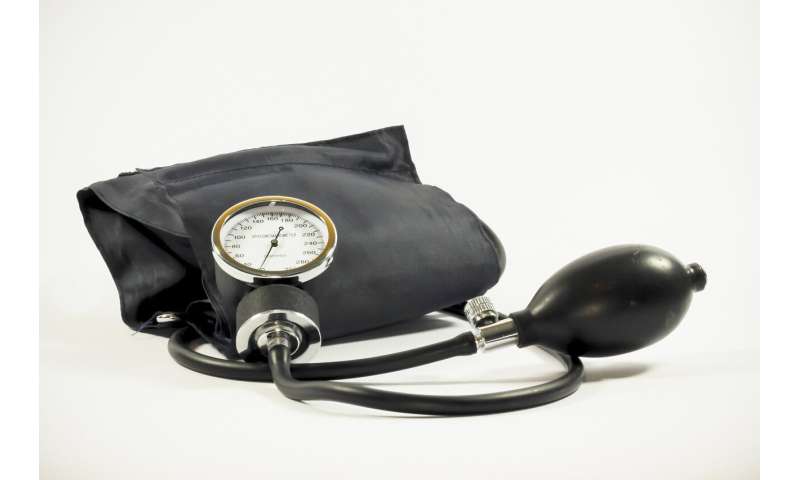Peripheral artery disease risk factors are higher in underrepresented groups, says researcher

A new scientific statement issued by the American Heart Association (AHA) says that just by being from an underrepresented group, a person can have a higher risk of developing peripheral artery disease, or PAD, which is a dangerous narrowing of blood vessels in the leg.
The statement, whose authors include Carlos Mena-Hurtado, MD, associate professor of medicine (cardiology) at Yale School of Medicine, says that African American, Hispanic, and Native American people face a high risk of developing serious PAD, including amputation, in comparison to white adults.
The risk is increased because health variables and socioeconomic differences make receiving medical attention or even preventive care harder for these communities. Such situations as a lack of health insurance and delays in seeking primary care can contribute to the development of the disease and its serious complications.
"If you don't have a primary care doctor, and you don't have access to medical care, you're not going to be able to get the diagnosis of this. If you don't have insurance, your ability to prioritize your health needs is very challenging and difficult," says Mena-Hurtado, who also is co-director of the Vascular Medicine Outcomes Program (VAMOS) at Yale Medicine.
"If you don't have means of transportation, if you don't have access to someone who can either explain or review with you the importance of these issues, it becomes an issue." Reduced access to nutritious food and regular exercise can also bring on or aggravate the condition.
One solution Mena-Hurtado proposes is a relatively simple exam. He says an ankle brachial index (ABI) test is the easiest way to check for PAD if a health care provider suspects the patient may have the condition. "I think that any physician can do that," he says. "Those are the physicians who will first see these patients so that would apply to internal medicine doctors, primary care doctors, podiatrists, cardiologists, anyone that sees a patient who has lower extremity symptoms, who has significant risk factors, would benefit from those tests."
Even if they have been diagnosed, Mena-Hurtado says, many patients are unaware of the importance of medications that are prescribed to them, and frequently don't take them as instructed. Because of that, he adds that raising awareness of this in physicians is key since some might not be aware of patients not being on the medication.
According to the scientific statement, which was published in Circulation, multicultural communities also face lower expected survival rates and a worse quality of life after amputation. One reason is a reluctance among some groups to use prostheses in the event of a limb amputation, making patients more likely to need care from assisted living facilities. Mena-Hurtado says these factors place a social and economic burden not only on the patients but on their families.
Some solutions to health inequity
To close the gap in health inequity, the statement authors proposed raising awareness, low-cost testing and a more culturally sensitive physician workforce.
"The first step would be a good and thorough physical examination and raising awareness about PAD as a potential problem that comes with your initial visit and contact with your physician," says Mena-Hurtado .
If the patient has risk factors, then an ABI test would follow.
Another effective method would be for physicians to spread information about the disparities and the disease to patients and their communities, since much of the atherosclerotic disease in the country remains undiagnosed.
Black adults are most frequently affected
Among the population groups mentioned in the AHA statement, African Americans are the most affected by the disease, and in a study published recently in Vascular Medicine, Mena-Hurtado and colleagues focused on symptoms of PAD that Black people suffer.
They found that, if a person got an abnormal result after performing the ABI test, then it would be more likely for them to experience a major cardiovascular event. That was true both for African American people who experienced symptoms, and for those who didn't. Also, women were more prone to developing the condition than men.
Mena-Hurtado says the AHA statement and the Vascular Medicine study highlight similar themes. "They are the same, they are talking about vulnerable communities. The statement at large includes all demographics and all the different variables that exist. The paper in Vascular Medicine is focusing on African Americans, but it's targeting the same problem at a different scale," he says.
For Mena-Hurtado, this subject is personal. "On a daily basis I see patients with this pathology," he says, "I am of Hispanic origin, so I feel for my community, and I think it's important to bring those issues to the forefront."
More information:
Megan Lee et al, Lower extremity symptoms and ankle–brachial index screening as predictors of cardiovascular outcomes in Black adults, Vascular Medicine (2023). DOI: 10.1177/1358863X231151729
Provided by Yale University